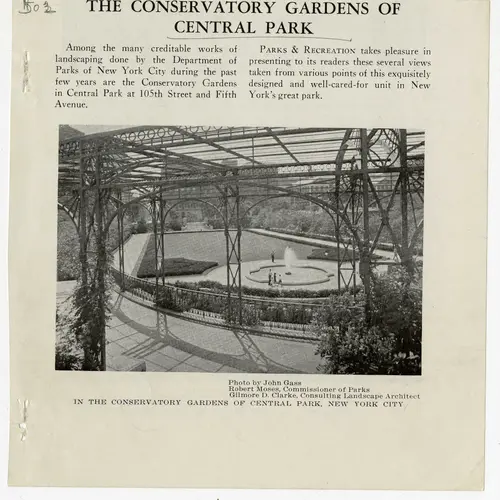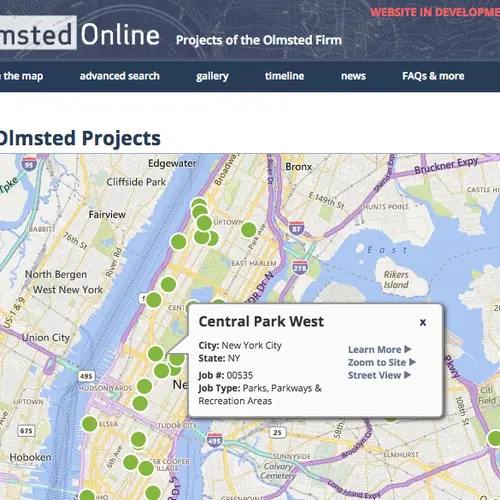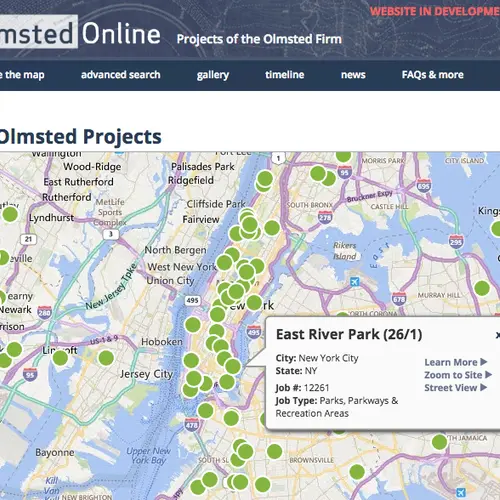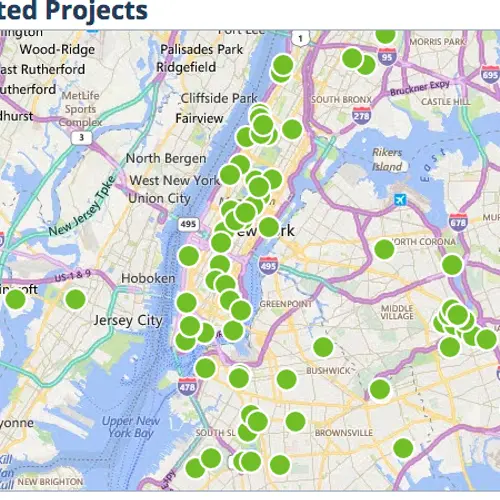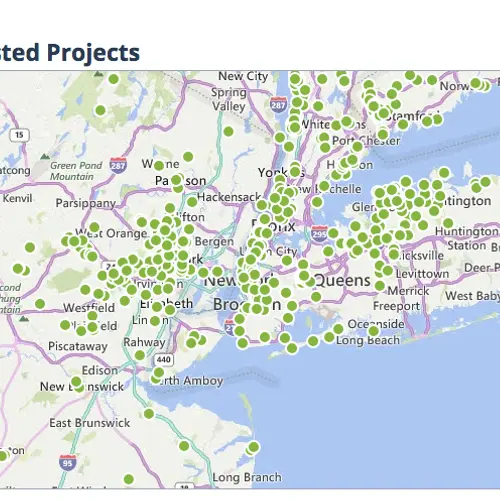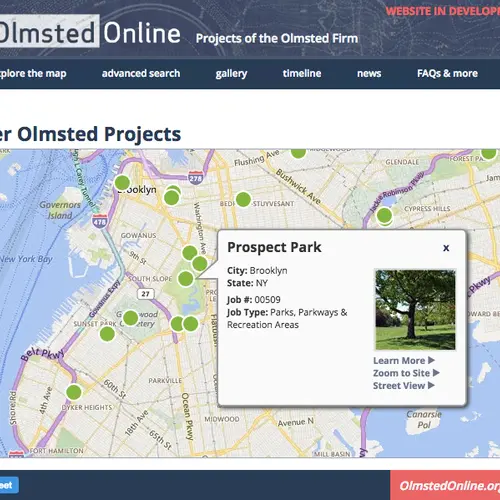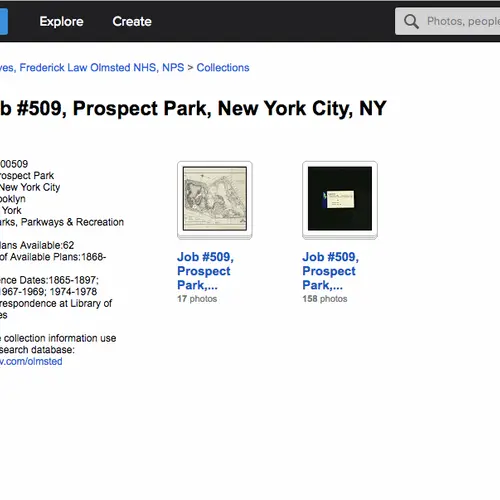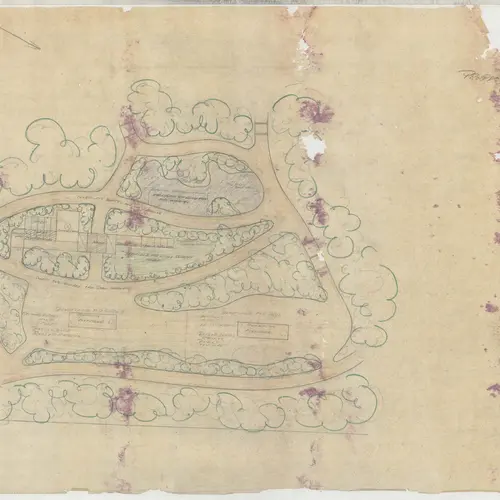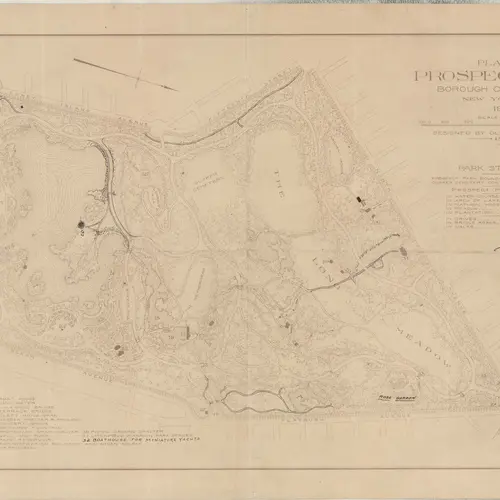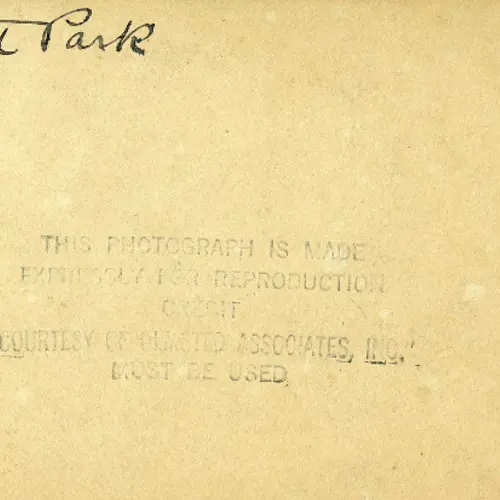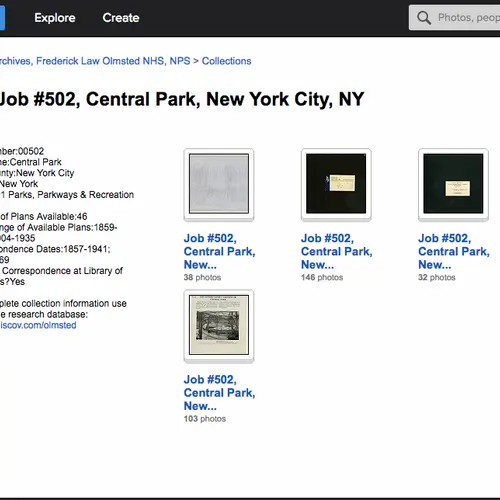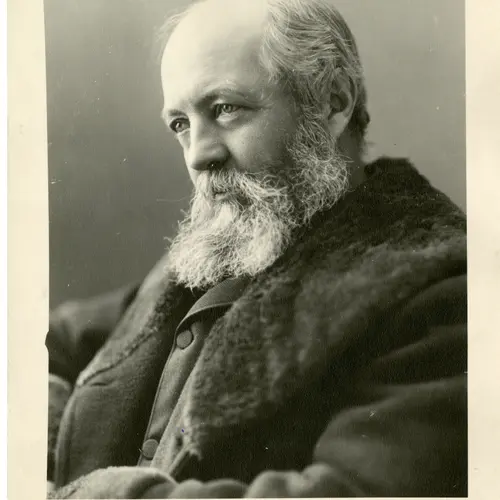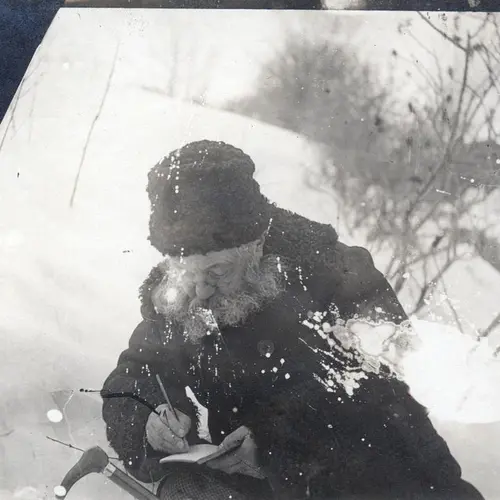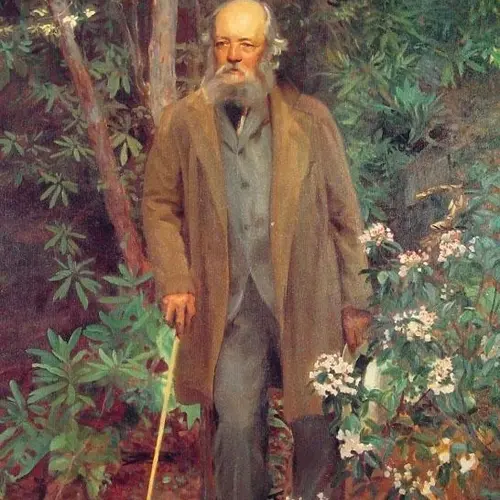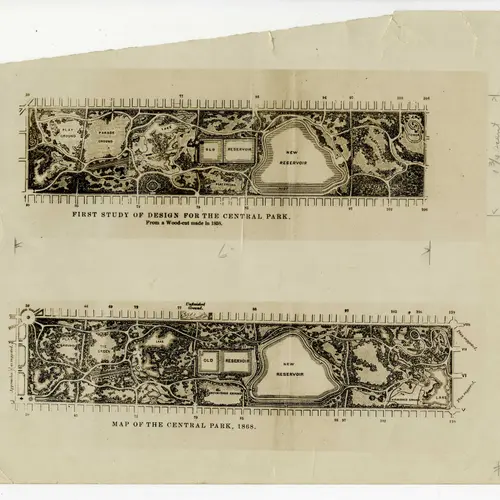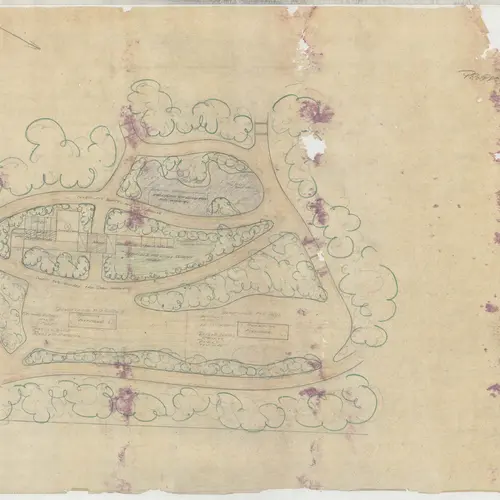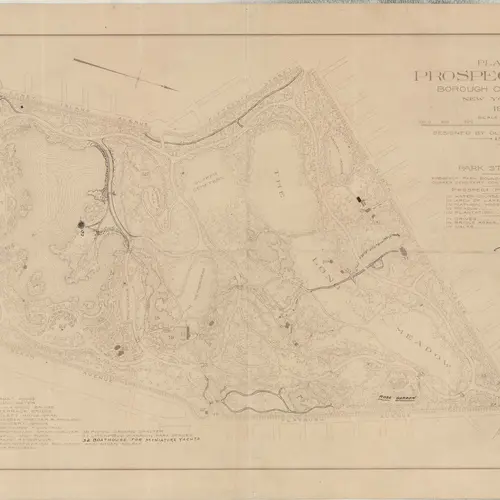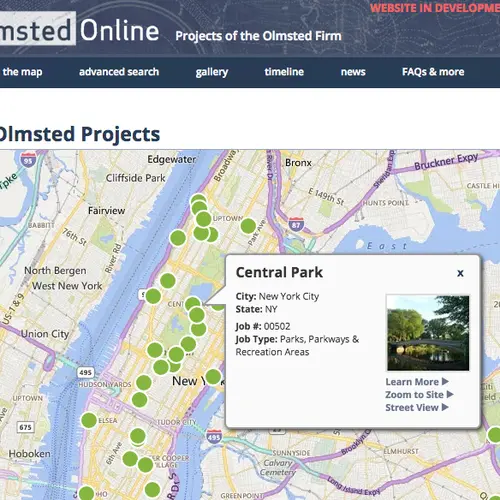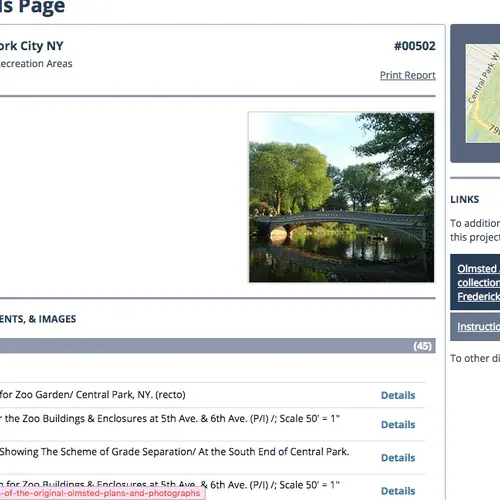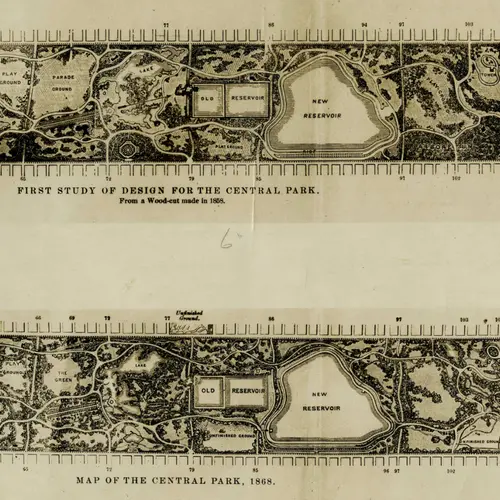An archive of 24,000 documents from Frederick Law Olmsted’s life and work is now available online
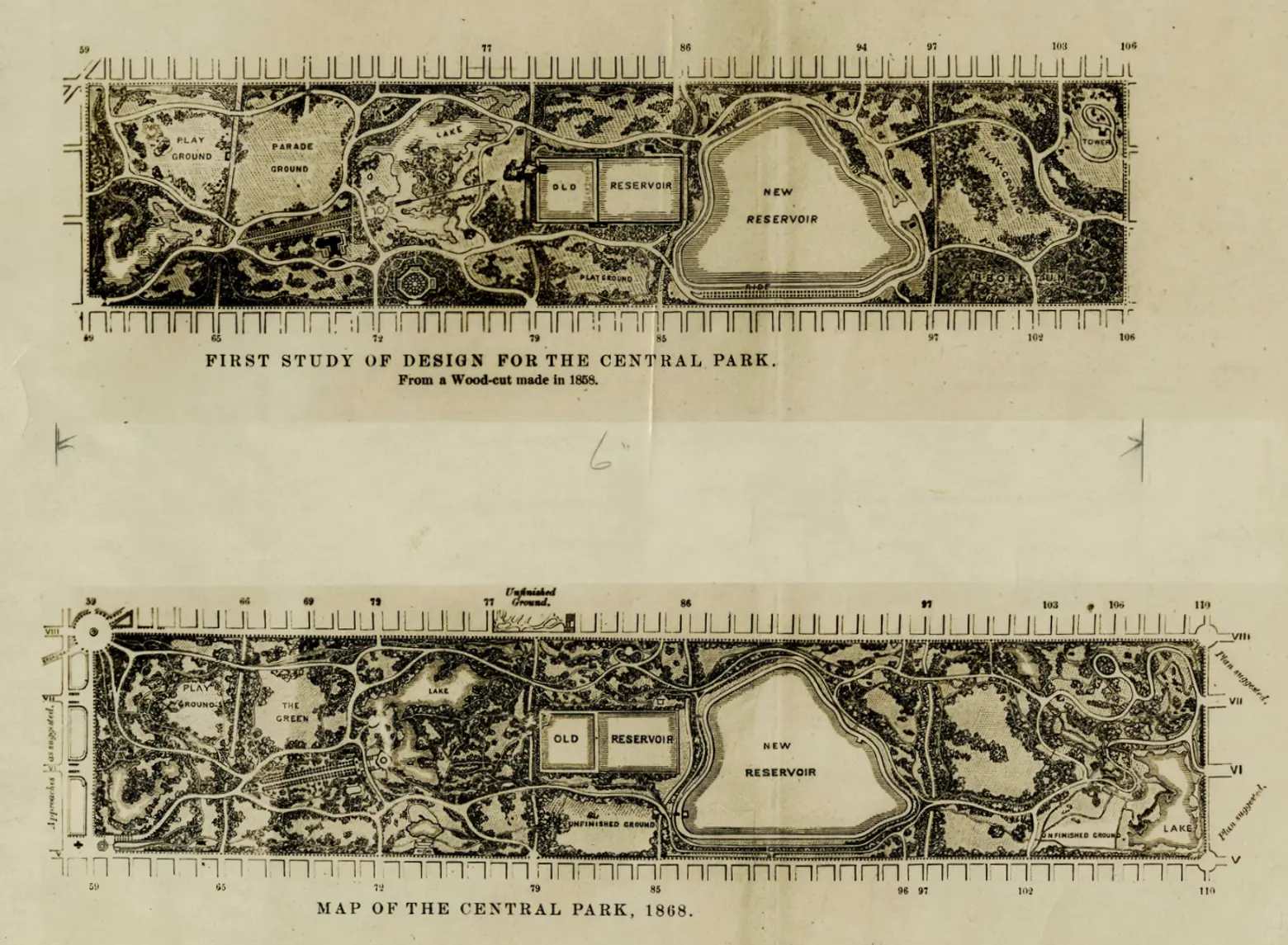
Early designs for Central Park. Image courtesy of the National Park Service, Frederick Law Olmsted National Historic Site.
When thinking of influential creators of New York City’s most memorable places, it’s hard not to imagine Frederick Law Olmsted near the top of the list. Considered to be the founder of landscape architecture–he was also a writer and conservationist–Olmsted was committed to the restorative effects of natural spaces in the city. Perhaps best known for the wild beauty of Central and Prospect Parks, his vast influence includes scores of projects such as the Biltmore estate, the U.S. Capitol grounds and the Chicago World’s Fair. In preparation for the bicentennial of Olmsted’s 1822 birth, the Library of Congress has made 24,000 documents providing details of Olmsted’s life available online, Smithsonian reports. The collection includes journals, personal correspondence, project proposals and other documents that offer an intimate picture of Olmsted’s private life and work. The collection is linked to an interactive map at Olmsted Online showing all Olmsted projects in the United States (and there are many). You can search the map according to project name, location, job number and project type.
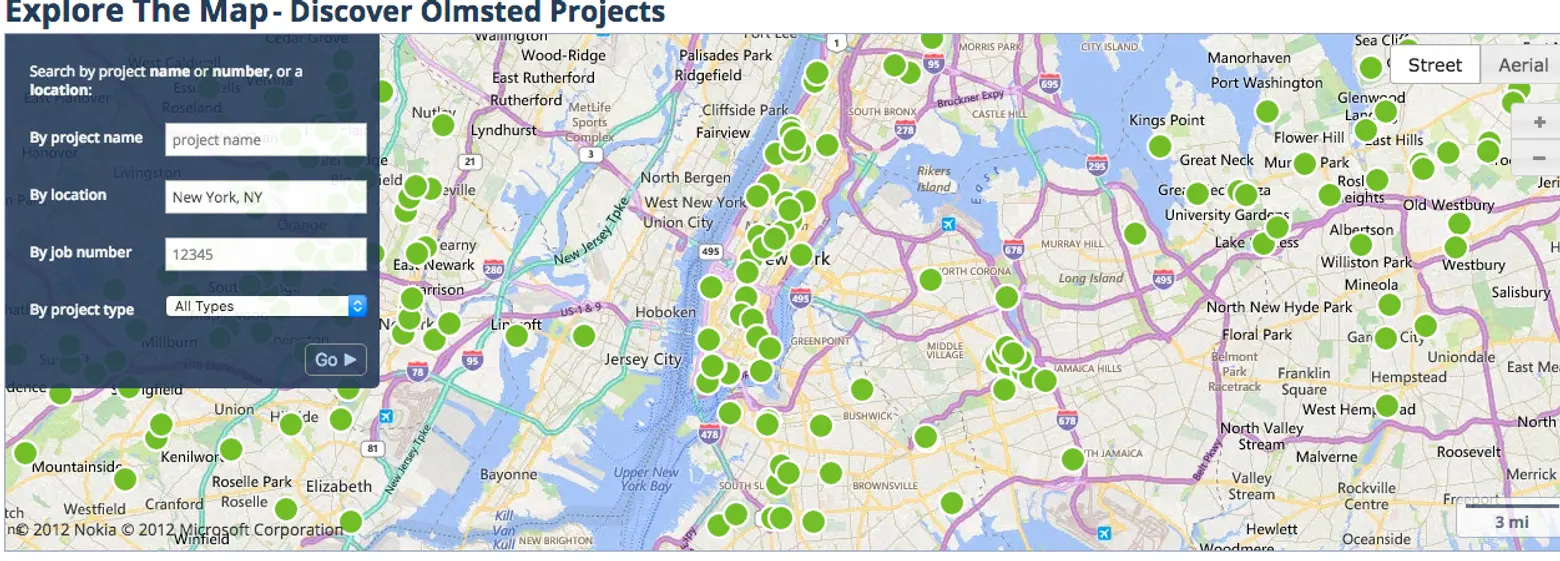
Click on each green dot on the map (pictured in screenshot above) to find (where available) documents and historic images that relate to Olmsted projects from private estates to city plans.
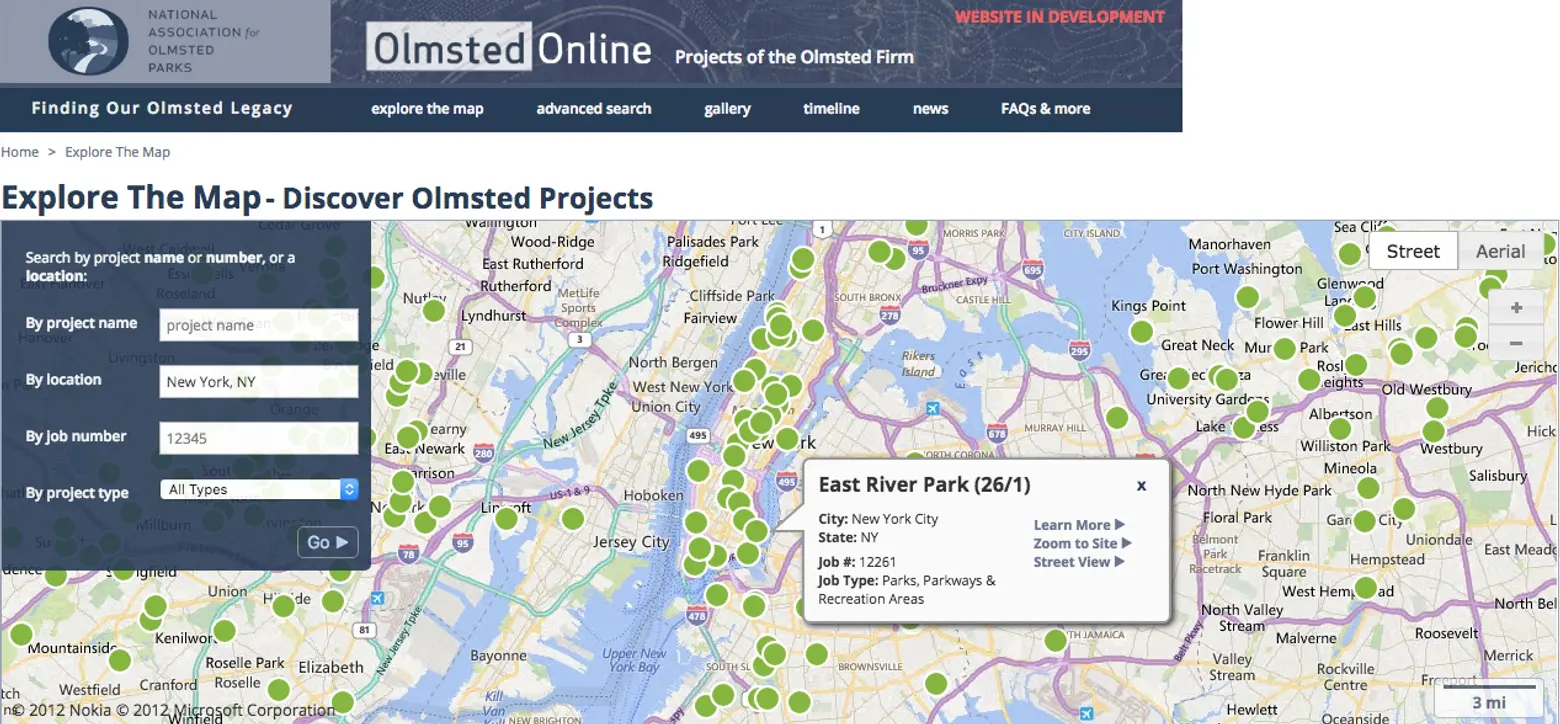
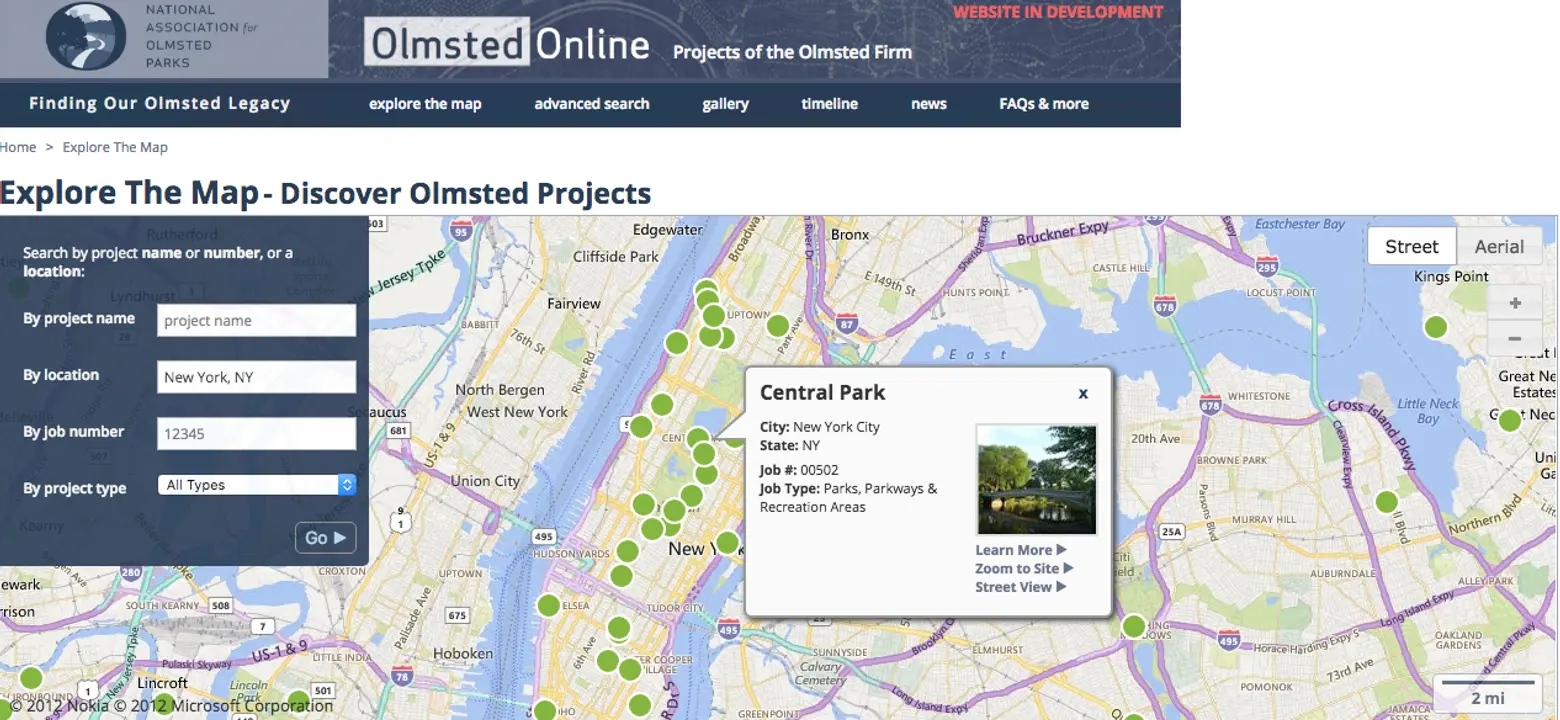
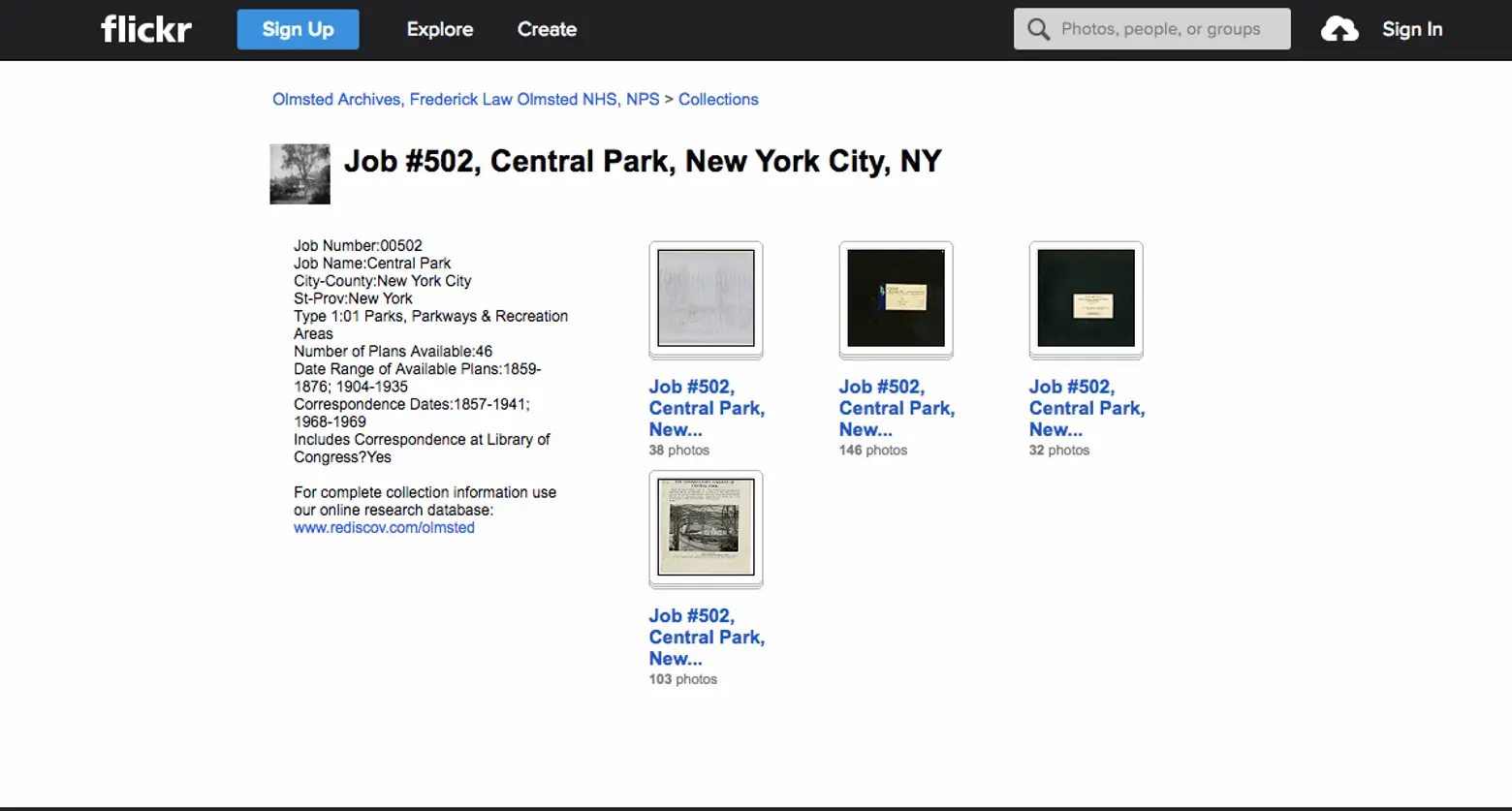
In New York City alone you’ll find information on his work on the Manhattan street system, Tompkins Square, East River Park and much more.
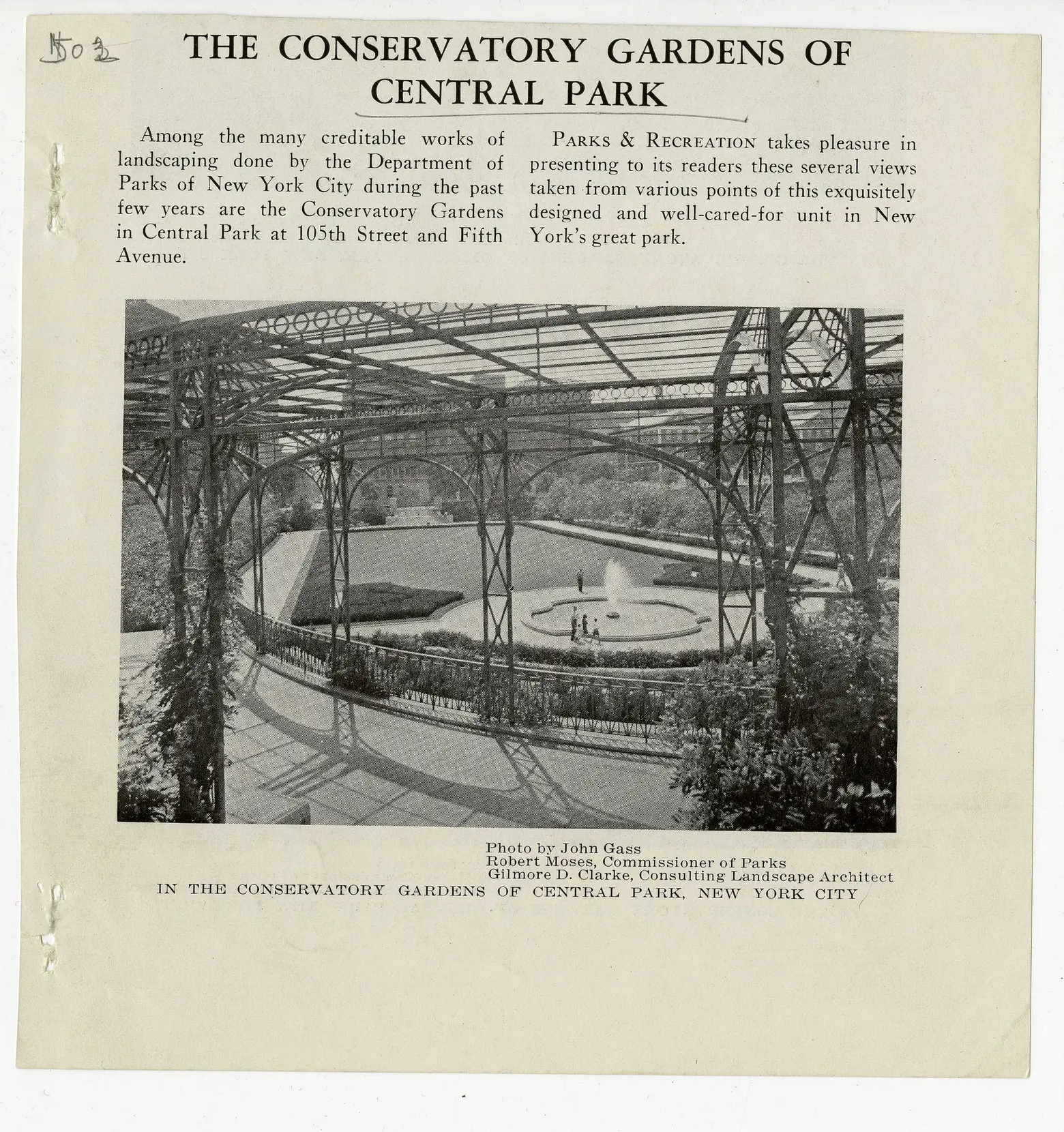
Conservatory Gardens of Central Park. Image courtesy of the National Park Service, Frederick Law Olmsted National Historic Site.

Image courtesy of the National Park Service, Frederick Law Olmsted National Historic Site.
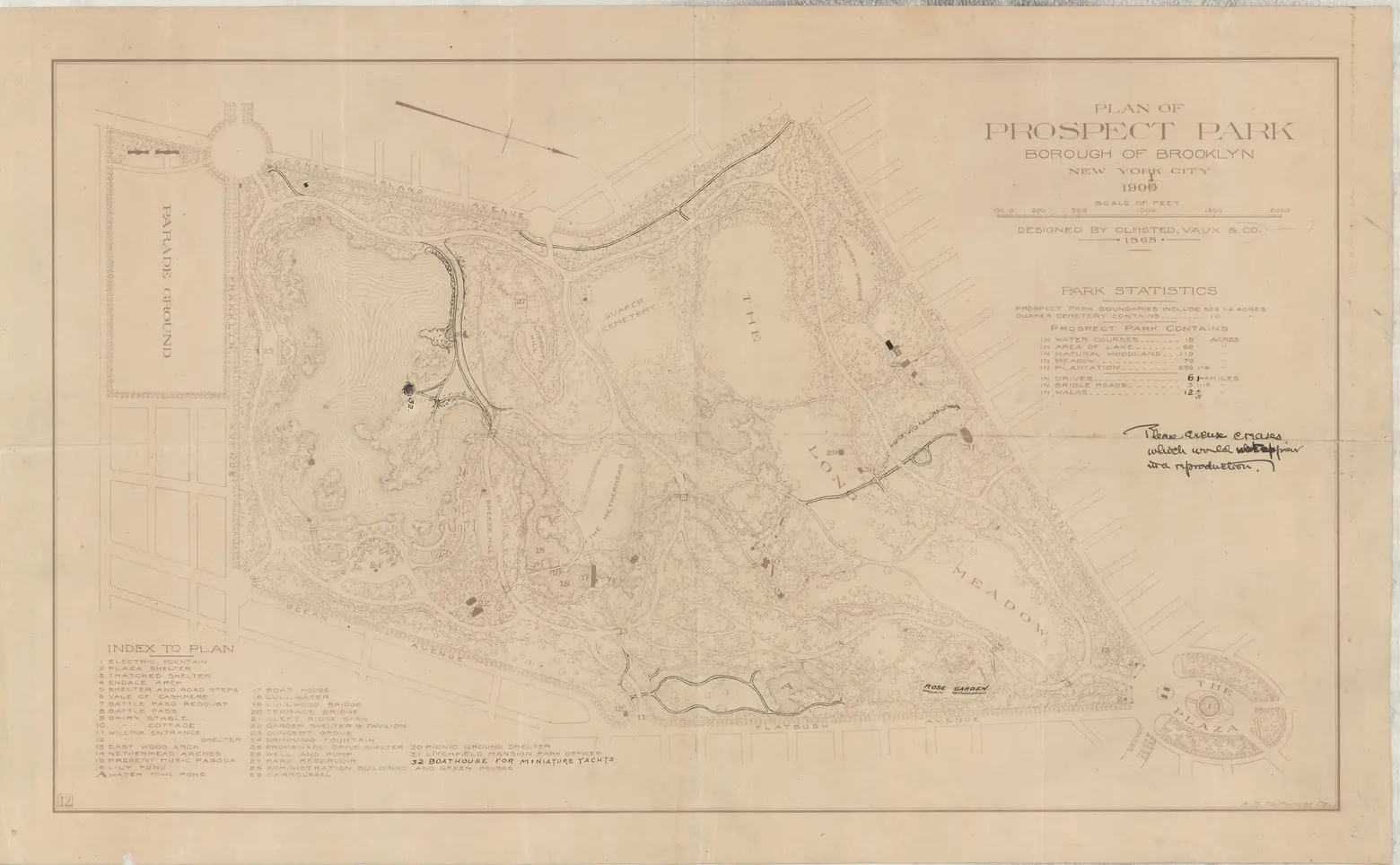
Prospect Park drawing. Image courtesy of the United States Department of the Interior, National Park Service, Frederick Law Olmsted National Historic Site.
Overall the newly available archived collection contains about 47,300 scanned images dating between 1777 and 1952, though most are from between 1838 and 1903, the year of Olmsted’s death at 81. Visitors can link directly to the content they would like to view. In addition to items like correspondence about the Chicago World’s Fair and an unpublished history of the United States, highlights include a pencil sketch diagram detailing Capitol grounds landscaping, a letter to Olmsted’s wife telling of the suffering endured by soldiers fighting in the Civil War and an early report on the preservation of the giant sequoias in California and Yosemite.
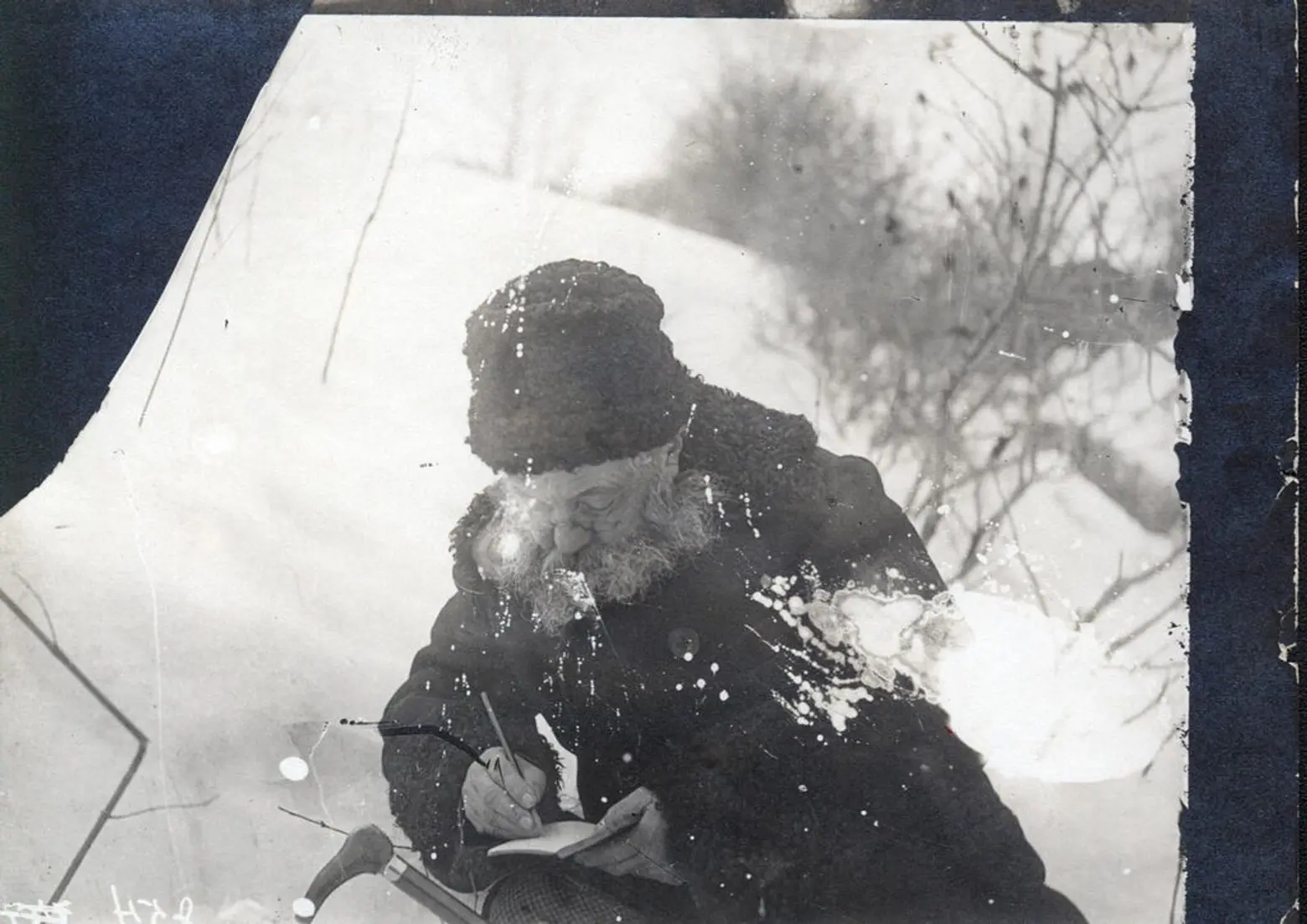
Imaage courtesy of the National Park Service, Frederick Law Olmsted National Historic Site.
Olmsted spent his younger years acquiring an impressive body of life experience that included working as an apprentice on a tea ship to China, reporting on slaveholding states in the American South for the New York Times, running a farm on Staten Island and collaborating with his younger brother on a European expedition. In 1857 he took a position as superintendent of the in-the-works Central Park and spent the next five decades of his life devoted to the development of natural spaces–the results of which New Yorkers and visitors continue to enjoy every day.
[Via Smithsonian]
RELATED:
- Forgotten Four Acres of Central Park Reopens to Visitors After Almost 90 Years
- The History of Central Park’s Hooverville, the Great Depression Pop-Up Shanty Town
- New Yorker Spotlight: Sara Cedar Miller and Larry Boes of the Central Park Conservancy
- Looking at NYC’s 10 Scenic Landmarks and What Sets Them Apart from Other Public Parks
